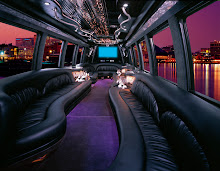Limousines are specially-designed vehicles that have historically been known for ferrying the wealthy, top-level corporate executives, movie stars, and figures of royalty.
However,these days,if you can't own one, since they are quite expensive,you could rent them out for an hour or more, depending on the occasion or event you're into. Generally, limousines are stretched extensions of a sedan, and allow more legroom for its passengers, as well as having extra added amenities like bars, surround-sound TV and music systems, GPS monitors, revolving seats, and sometimes even a mini-swimming pool.
Standard Preventive Maintenance Tips You Could Do
As vehicles have a motley assortment of parts and components, familiarizing yourself with the vehicles' main components, would help a lot in giving you adequate info, and helps you in doing some minor repairs on the vehicle. Here are a few vehicle parts and components to check out:
- Tires. Keep your vehicle's tires inflated to recommended pressure. Check for cuts, bulges and excessive tread wear. Uneven wear indicates tires are misaligned or out of balance.
- Power Steering. Check out the power steering fluid level once per month. Do this by removing the reservoir dipstick. If the level is down, add fluid and inspect the pump and hoses for leaks.
- Transmission Fluid. Check transmission fluid monthly with engine warm and running, and the parking brake on. Shift to drive, then to park. Remove dipstick, wipe dry, insert it and remove it again. Add the approved type fluid, if needed. Never overfill.
- Batteries. Extra care should be taken while handling a battery since it can produce explosive gases. It is advisable not to smoke, create a spark or light a match near a battery. Always wear protective glasses and gloves.
- Brake Fluid. Check the brake fluid monthly. First wipe dirt from the brake master cylinder reservoir lid. Pry off the retainer clip and remove the lid or unscrew the plastic lid, depending on which type your vehicle has. If you need fluid, add the improved type and check for possible leaks throughout the system. Do not overfill.
- Engine Oil. Check the oil after every fill up. Remove the dipstick, wipe it clean. Insert it fully and remove it again. If it is low, add oil. To maintain peak performance, the oil should be changed every 3,000 miles or 3 months, whichever comes first. Replace the oil filter with every oil change.
- Shock Absorbers. Be on the lookout for signs of oil seepage on shock absorbers, test shock action by bouncing the car up and down. The car should stop bouncing when you step back. Worn or leaking shocks should be replaced. Always replace shock absorbers in pairs.
- Lights. Ensure that all the lights are clean and working, including the brake lights, turn signals and emergency flashers. Keep spare bulbs and fuses in your vehicle.
If you feel like you need to have your limousine thoroughly checked, you should enlist the services of a professional repair shop that would take good care of your vehicle's repair needs. Shop for an auto repair shop before you need one, or also ask for recommendations or referrals. Getting a good shop through word-of-mouth is often the best advertising for a professional technician.
Vanessa Arellano Doctor
Friday, December 28, 2007
Basic Checks On Your Limousine You Can Do Yourself
Subscribe to:
Post Comments (Atom)

No comments:
Post a Comment